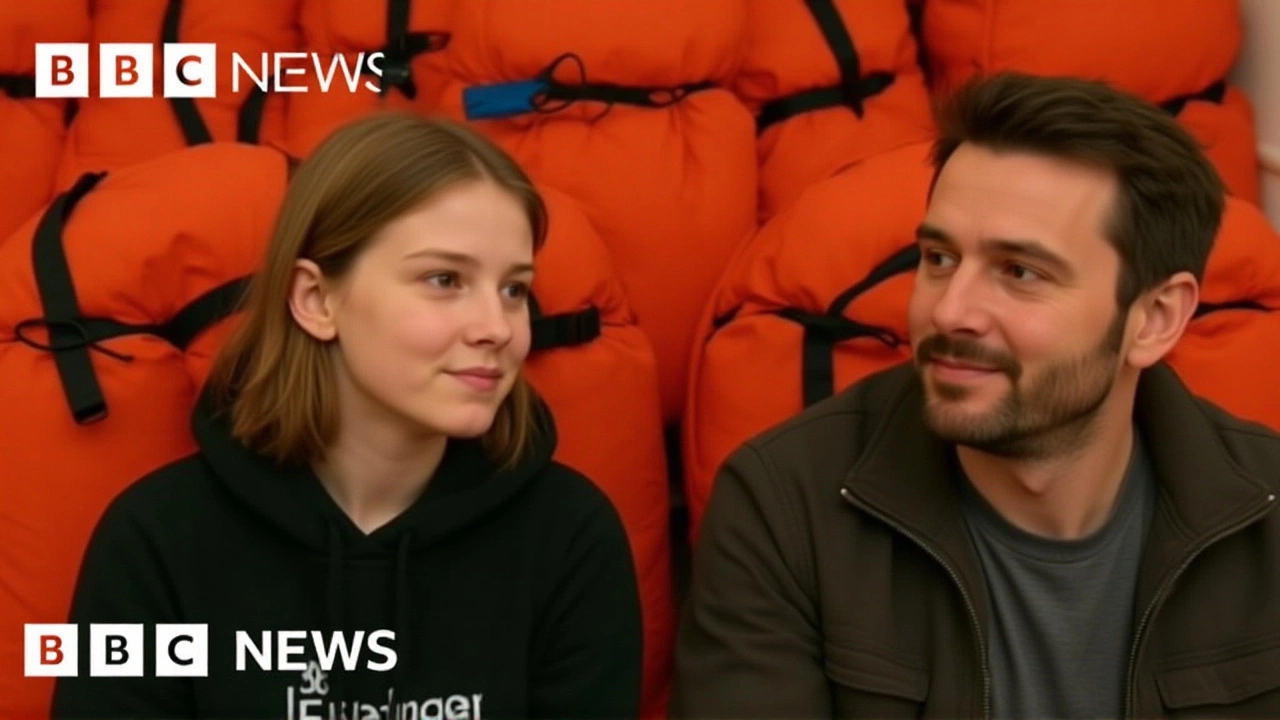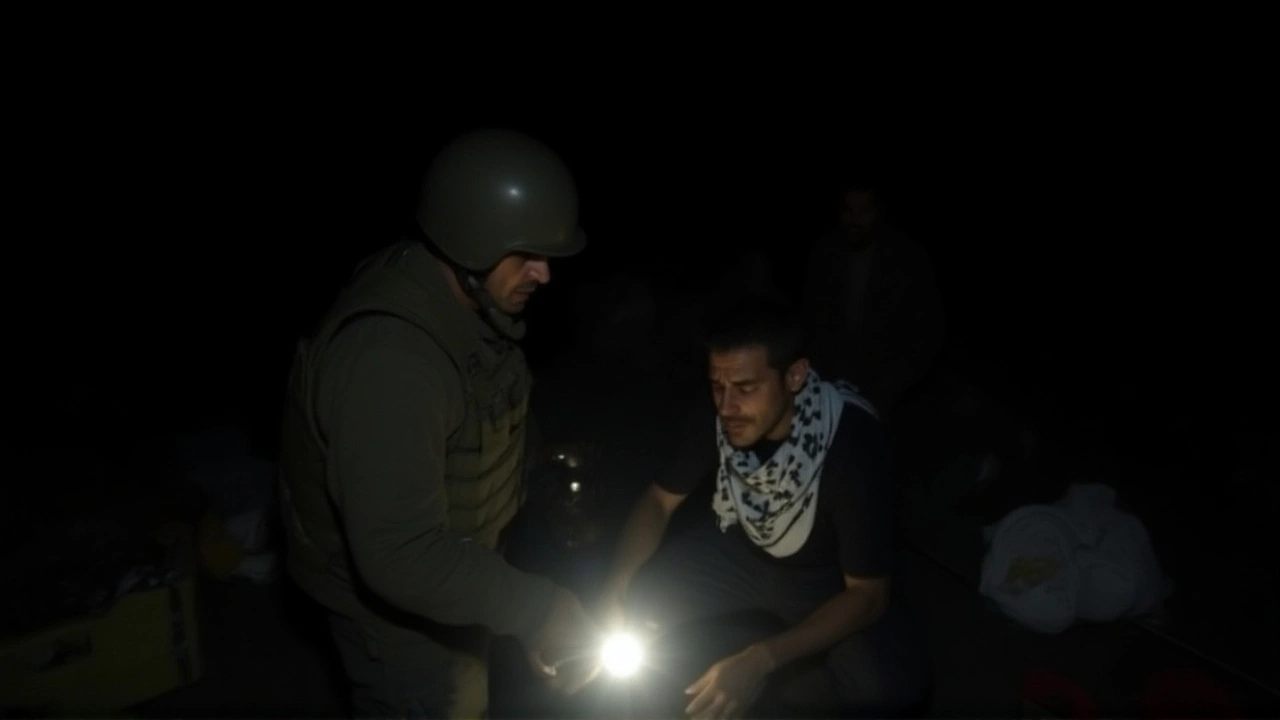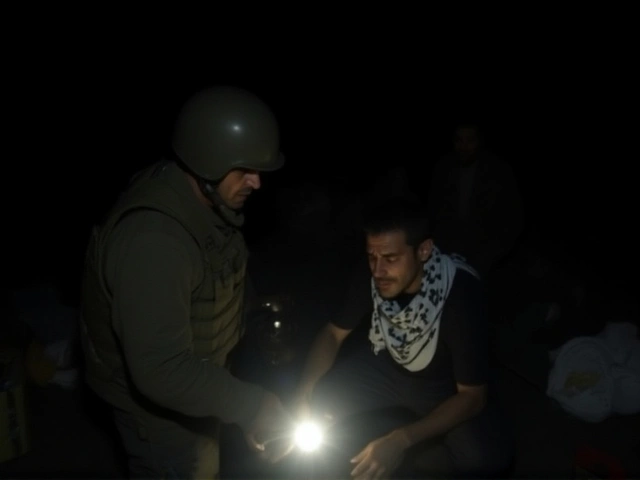When Israeli Defense Forces boarded the Global Sumud Flotilla about 80 miles off the coast of Gaza on Wednesday, October 2, 2025, the world watched a dramatic, camera‑filled raid that would ignite protests from Europe to South America. The flotilla, which activists say was carrying symbolic humanitarian aid, comprised somewhere between 42 and 50 vessels and listed roughly 400‑500 participants from more than a dozen nations. Among them was climate icon Greta Thunberg, who was confirmed safe after the boarding. Israeli troops seized the aid, detained the activists and vowed to deport them to their home countries, while the seized supplies were earmarked to stay out of Gaza’s hands.
Background: The blockade and past flotillas
Since 2007 Israel has enforced a maritime blockade on Gaza, citing security concerns over weapons smuggling. Human‑rights groups, however, argue the restriction has crippled the territory’s access to food, medicine and fuel, creating what many describe as a humanitarian crisis. Over the past decade, activist groups have mounted several high‑profile sea‑borne attempts to break the siege – the most famous being the 2010 Gaza Freedom Flotilla, which ended in a deadly confrontation. The Global Sumud Flotilla was billed as a peaceful, solidarity‑driven mission. Its organizers, a coalition of NGOs from Europe, South America and the Middle East, said the ships would deliver pallets of non‑perishable food, medical kits and letters of support. The flotilla set sail from the port of Valencia, Spain, on September 28, 2025, after sailing past the naval vessels of Italy and Spain that had initially shadowed it.
The interception: How the raid unfolded
At 22:15 local time, IDF warships approached the convoy from the north, surrounding the lead vessel, the MV Hope. Within minutes, armed personnel in black tactical gear boarded the ships, using ladders and fast‑roping from helicopters. Video footage streamed live on social media, showing activists shouting, “We are peaceful!” as soldiers shouted commands in Hebrew and Arabic. According to the Israeli military statement released on October 3, 2025, the operation was justified under international law because the flotilla entered what Israel considers a restricted maritime zone. The statement did not disclose the exact amount of aid seized, but activists estimate over 12 tons of supplies were on board. Greta Thunberg was photographed being escorted to a waiting vessel. In a brief interview with a Swedish outlet, she said, “I’m safe, but the sight of families in Gaza without food makes this impossible to ignore.”
Reactions around the globe
The raid sparked an immediate outcry. Streets in Berlin, Paris, São Paulo and Istanbul filled with demonstrators holding banners that read “Stop the blockade” and “Humanity over politics.” In Italy, the response reached historic proportions. The Italian General Confederation of Labour (CGIL) called for a one‑day general strike on Friday, October 4, 2025. More than two million workers across public transport, education, healthcare and manufacturing walked off the job, marking one of the largest solidarity actions in post‑war Italian history. Spanish and Turkish officials lodged formal protests at the Israeli embassy, while the European Union’s foreign policy chief warned of “serious repercussions” if similar seizures continue. The United Nations Secretary‑General issued a statement urging both parties to resume humanitarian corridors, emphasizing that “blocking aid is not a security measure, it is a humanitarian crime.”
Impact assessment: What the seizure means for Gaza and the activist movement
Human‑rights NGOs estimate that the aid withheld could have fed an estimated 10,000 Gazans for a week, based on the average caloric content of the pallets. The loss therefore deepens an already dire situation where UN agencies report that 85 % of Gaza’s population now lives below the humanitarian threshold.
Activist groups argue the interception will deter future flotillas, but many insiders say the opposite is true. “History shows that repression fuels resistance,” said Dr. Leila Hassan, a professor of Middle‑Eastern studies at the University of Cairo. “We’ll see more private vessels and maybe even civilian drones trying to bridge the gap.”
The episode also raised legal questions about the status of humanitarian aid on the high seas. International maritime law experts point out that seizing non‑military cargo without a court order could be deemed piracy, a serious violation of the United Nations Convention on the Law of the Sea.

What comes next? Diplomatic and operational outlook
In the short term, Israel has announced it will process the detained activists through its regular immigration channels, with most expected to be deported to their home countries within weeks. The seized cargo is slated for “security inspection” before a final decision on its fate. Diplomatically, the European Union is preparing a joint statement to be presented at the next UN Security Council meeting, scheduled for October 10, 2025. Meanwhile, the United Kingdom’s Foreign Office is reviewing its policy on maritime aid missions, hinting at possible sanctions against Israeli officials if further blockades occur. For the activist community, planning is already underway for a new sea‑borne initiative, tentatively named “Operation Dawn,” which aims to use smaller, faster vessels to evade detection.
Key facts at a glance
- Date of interception: October 2, 2025
- Location: ~80 miles off the coast of Gaza
- Number of vessels: 42‑50 (reports vary)
- Activists on board: 400‑500, including Greta Thunberg
- Italian strike participants: >2 million workers
Frequently Asked Questions
Why did Israel consider the flotilla a security threat?
Israel argues that any vessel attempting to breach its maritime blockade could carry weapons or materials that might be used by militant groups in Gaza. The military therefore treats such ships as entering a restricted zone, even when the cargo is advertised as purely humanitarian.
How many activists were actually detained, and where are they now?
Roughly 420 activists were taken into custody after the raid. They were transferred to an IDF detention center near Tel Aviv and are slated for deportation to their respective European or South‑American home countries within the next two weeks.
What impact did the seizure have on Gaza’s humanitarian situation?
Aid groups estimate the confiscated supplies could have fed about 10,000 residents for a week. Their loss deepens shortages of food and medical items, contributing to an already critical humanitarian emergency that the UN says affects 85 % of Gaza’s population.
What sparked the massive strike in Italy?
The Italian General Confederation of Labour (CGIL) called the strike in solidarity with the Gaza blockade protestors. Over two million workers across multiple sectors walked off their jobs on October 4, marking one of the largest solidarity actions in recent Italian history.
Could this incident set a legal precedent for future humanitarian missions?
Legal scholars say the seizure could be examined under the United Nations Convention on the Law of the Sea. If deemed piracy, it might influence how future aid convoys are protected and could lead to international courts issuing binding rulings on maritime humanitarian aid.

